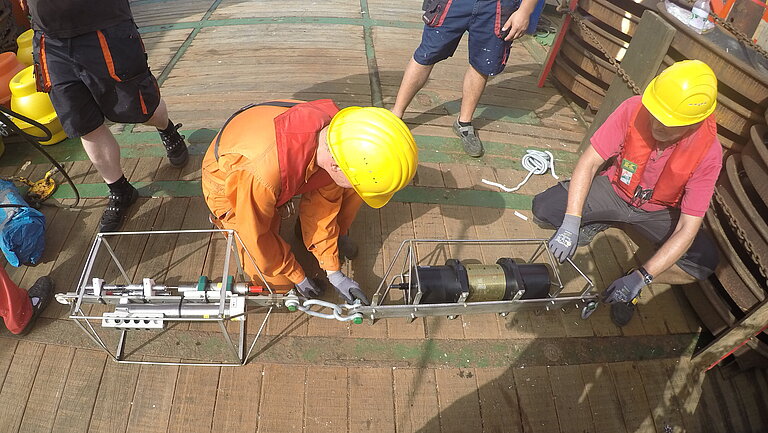A new source of oxygen in the deep sea?
Research supported by GEOMAR questions the origins of life and calls for further research on oxygen production in the deep sea
Photosynthetic organisms like plants and algae use energy from sunlight to create the planet’s oxygen. But a during expeditions to the Clarion–Clipperton Zone in the North Pacific in 2021 and 2022, a research team led by Professor Dr. Andrew Sweetman of the Scottish Association for Marine Science (SAMS) in Oban, Great Britain, discovered that oxygen is also produced in complete darkness at the seafloor 4,000 metres below the ocean surface, where no light can penetrate. Their study has been published in the scientific journal Nature Geoscience today. The discovery is challenging the scientific consensus of how oxygen is produced and has even called into question how life on Earth began.
“For aerobic life to begin on the planet, there had to be oxygen, and our understanding has been that Earth’s oxygen supply began with photosynthetic organisms”, Prof. Sweetman said. “But we now know that there is oxygen produced in the deep sea, where there is no light. I think we therefore need to revisit questions like: where could aerobic life have begun?”
The discovery was made while sampling the seabed of the Clarion-Clipperton Zone to assess the possible impacts of deep-sea mining. This process would extract polymetallic nodules that contain metals such as manganese, nickel and cobalt, which may help to address the growing demand required to produce lithium-ion batteries for electric vehicles and mobile phones. The researchers found nodules to be carrying a very high electric charge, which could lead to the splitting of seawater into hydrogen and oxygen in a process called seawater electrolysis. Only a voltage of 1.5 Volt is needed for seawater electrolysis to occur – the same voltage as a typical AA battery. The team analysed multiple nodules and recorded readings of up to 0.95 volts on the surfaces of some, meaning that significant voltages can occur when the nodules are clustered together.
The researchers first thought their sensors were faulty, because every study ever done in the deep sea has only seen oxygen being consumed rather than produced. But despite recalibrations, the surprising oxygen readings kept showing up – and a back-up method was explored.
In this context, Tobias Hahn, then a doctoral researcher at GEOMAR Helmholtz Centre for Ocean Research Kiel, provided expertise on a specific type of oxygen optode sensors. To avoid methodological uncertainties and explore possibilities of bad sensor behaviour, Hahn conducted calibration procedures, data processing and data evaluation of these sensors. “Through our exchange, we assured the data quality which goes beyond the typical measuring uncertainties and includes the sensors individual drift and pressure behaviour,” the chemical oceanographer said. “I was astounded about the results, yet relieved to re-assure the quality and validity of the oxygen optode sensor data which were obtained during the first field campaigns. At the same time, I was able to provide further advice on how to handle this sensor during future deployments.”
Prof. Sweetman now says that more investigation into ‘dark oxygen’ production is required during deep-sea mineral extraction baseline investigations as well as an assessment of how sediment smothering during mining may alter the process. “Through this discovery, we have generated many unanswered questions and I think we have a lot to think about in terms of how we mine these nodules, which are effectively batteries in a rock.”
Original publication:
Sweetman, A.K., Smith, A.J., de Jonge, D.S.W. et al. (2024): Evidence of dark oxygen production at the abyssal seafloor. Nature Geoscience, doi: https://doi.org/10.1038/s41561-024-01480-8

The oxygen optode sensors were extensively tested in the laboratory and in the field, as here during a mooring deployment. Photo: Tobias Hahn, GEOMAR

"We have a lot to think about in terms of how we mine these nodules, which are effectively batteries in a rock,” argues lead author Professor Dr. Andrew Sweetman, Scottish Association for Marine Science (SAMS). Photo: ROV KIEL 6000, GEOMAR


